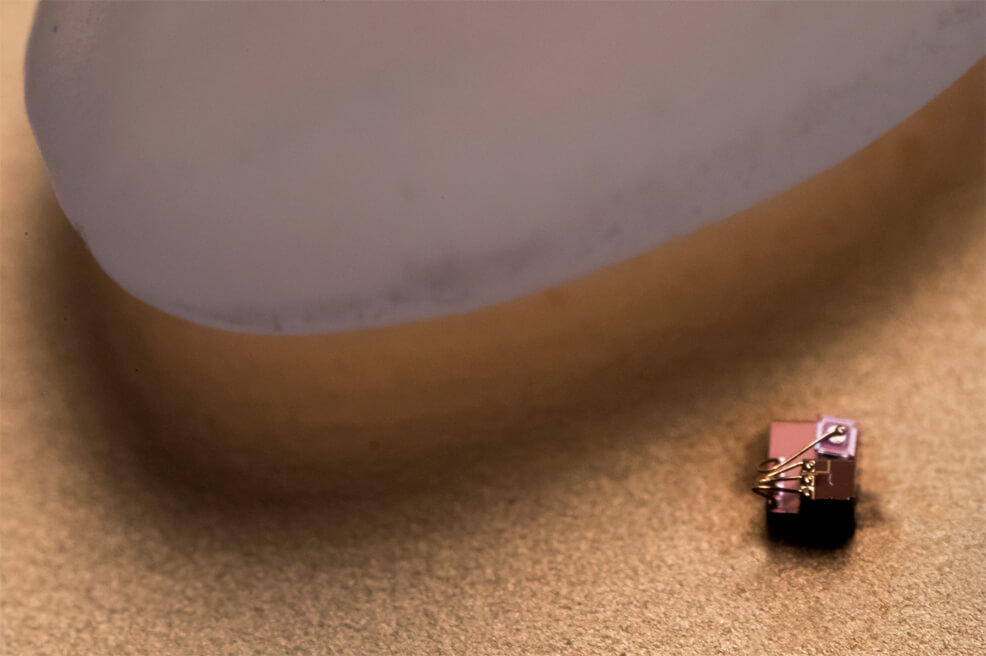
24th June 2018 World's smallest computer is just 0.3mm wide Researchers have developed a computing device that is smaller than anything created before and includes a processor, photovoltaics and RAM.
Earlier this year, IBM announced that it was developing the world's smallest computer – smaller than a grain of salt, yet more powerful than a computer from the early 1990s and costing less than 10¢. Despite being only 1mm x 1mm across, it could feature up to a million transistors, a solar cell and even a tiny communications module. Now, a team at the University of Michigan has revealed an even smaller device, measuring just 0.3mm (0.01 inches) wide. For comparison, the visual limit of the human eye, below which objects are no longer resolvable, is around 0.03mm (0.001 inches), i.e. within an order of magnitude. This machine includes a processor, RAM and photovoltaics, alongside wireless transmitters and receivers. Due to its extreme compactness, however, it cannot incorporate a conventional radio antenna, so instead relies on visible light to receive and transmit data. According to the researchers, one of the biggest challenges in making a computer of this size was how to run at very low power when the system packaging had to be transparent. The light from its base station – and from the device's own transmission LED – can induce currents in its tiny circuits. "We basically had to invent new ways of approaching circuit design that would be equally low power, but could also tolerate light," said David Blaauw, professor of electrical and computer engineering, who led the development of the new system. The device has a variety of applications, but is designed primarily to function as a precision temperature sensor, the researchers say. It can record temperatures within tiny regions, such as a cluster of cells, using a series of electronic pulses accurate to within 0.1°C (0.18°F). This could allow detailed studies of cancer. "Since the temperature sensor is small and biocompatible, we can implant it into a mouse and cancer cells grow around it," says Gary Luker, a professor of radiology and biomedical engineering. "We are using this temperature sensor to investigate variations in temperature within a tumour versus normal tissue and if we can use changes in temperature to determine success or failure of therapy." Other uses may include: • Pressure sensing inside the eye for glaucoma diagnosis The team presented their work at the Symposia on VLSI Technology and Circuits, held this week in Honolulu, Hawaii.
Comments »
If you enjoyed this article, please consider sharing it:
|







